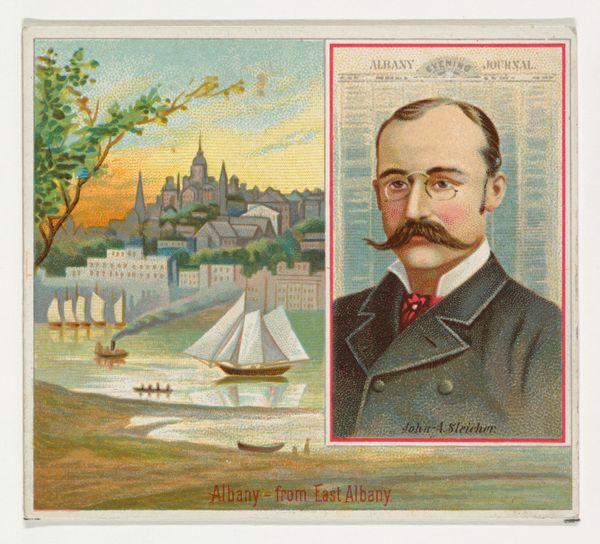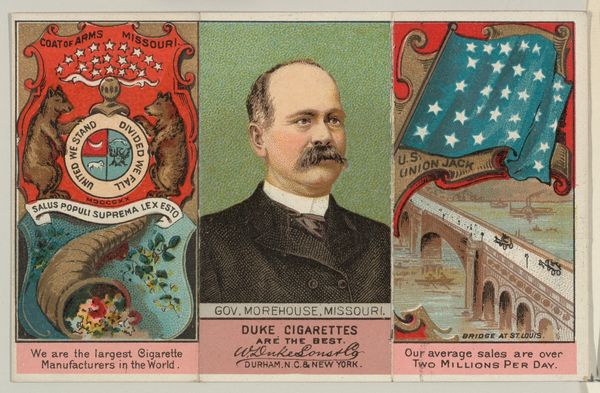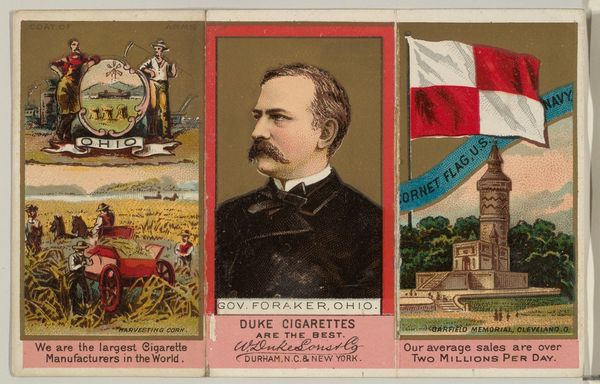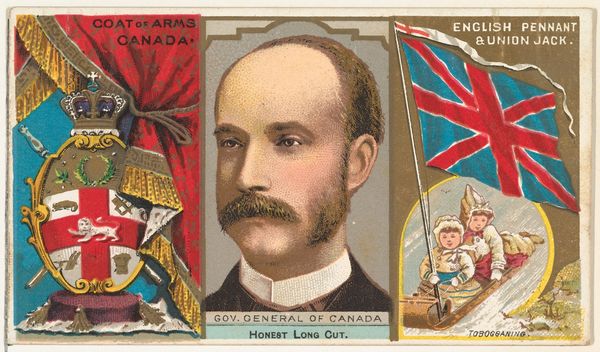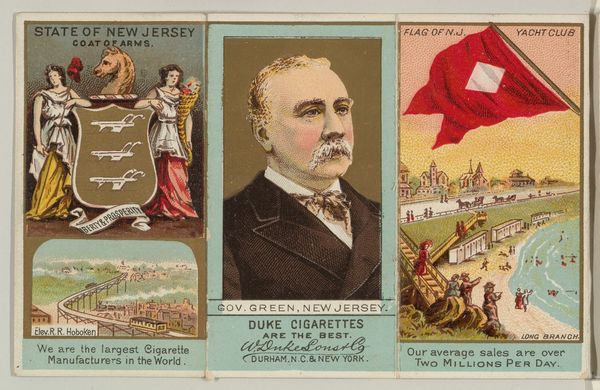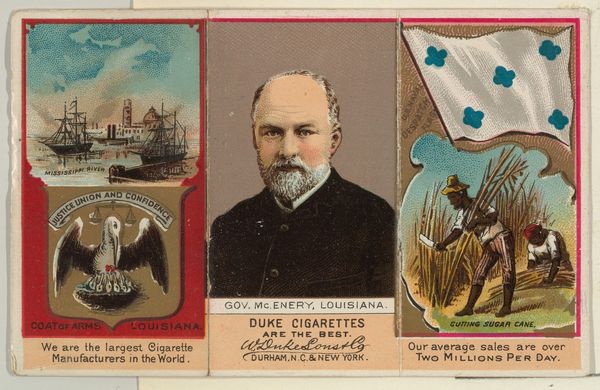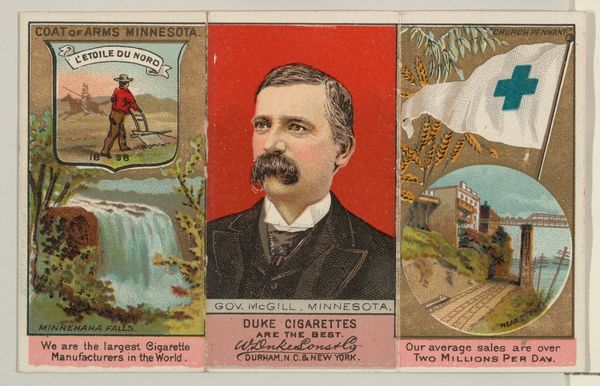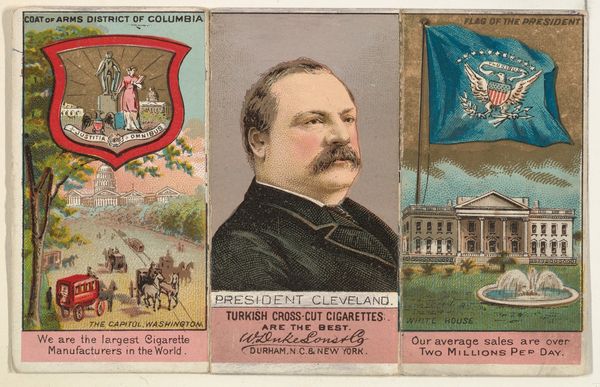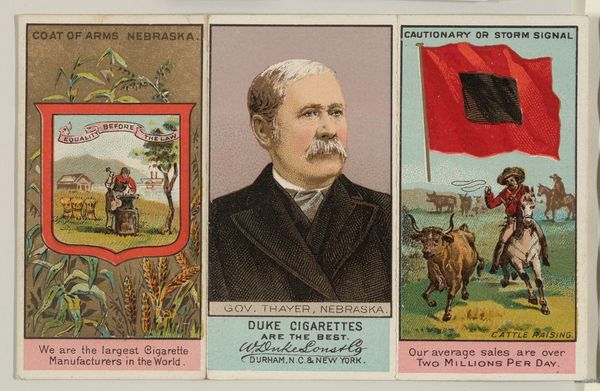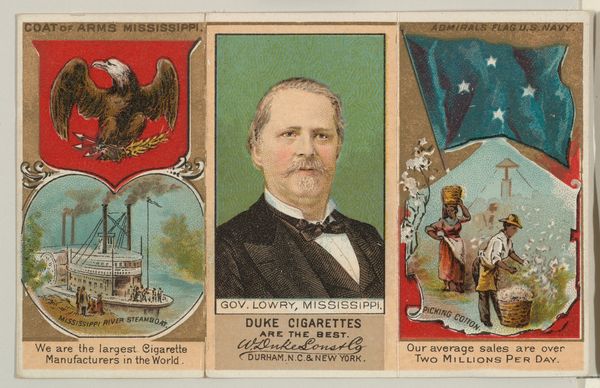
Governor Taylor, Tennessee, from "Governors, Arms, Etc." series (N133-2), issued by Duke Sons & Co. 1885 - 1892
0:00
0:00
drawing, graphic-art, lithograph, print, etching
#
portrait
#
drawing
#
graphic-art
#
lithograph
# print
#
etching
#
caricature
#
caricature
#
19th century
#
men
Dimensions: Sheet (unfolded): 2 3/4 × 4 5/16 in. (7 × 11 cm) Sheet (folded): 2 3/4 × 1 3/8 in. (7 × 3.5 cm)
Copyright: Public Domain
Curator: So, this object. Let’s not call it ‘art’ yet. What is it, when you look at the means of its making, of its production? Editor: It's called "Governor Taylor, Tennessee," a lithograph card from between 1885 and 1892 by Duke Sons & Co., part of their "Governors, Arms, Etc." series. It's got Governor Taylor's portrait flanked by images of Tennessee's coat of arms and, well, I guess something naval. I'm struck by how busy it is. It's almost like a little advertisement. How do you see this, thinking about its origins as an object? Curator: Exactly! It IS an advertisement, pure and simple. Think about the labor involved. From the cotton pickers depicted to the printing process, everything here is about the industrial production and circulation of a commodity. What does the presence of the cotton pickers tell us about the material realities underlying the glamour of the Governor's portrait? Editor: Well, the connection is jarring, seeing enslaved people literally providing raw material, adjacent to this powerful figure... It brings up ethical questions. Were those people even fairly compensated? Or even free? It really does tie the labor to the person in power in a way that’s difficult to ignore. Curator: Precisely! Duke Sons & Co. are literally saying, "Here is the South, in all its aspects, bound together in our product!" They used these cards as inserts in cigarette packs, understanding how cheap mass-produced imagery could generate cultural associations, shaping taste and even ideals of governance, all for the sake of consumption. How does seeing it this way change your perception? Editor: I was focused on the image at first, and I missed what it was doing. Seeing the card as a tool in a larger economic system makes it feel… dirtier. I see it as part of this whole network now, where industry touches labor and then creates product... very illuminating. Curator: Exactly, we can look at an art object through this cultural perspective. It allows us to unpack this relationship of product and image in unique and creative ways!
Comments
No comments
Be the first to comment and join the conversation on the ultimate creative platform.


